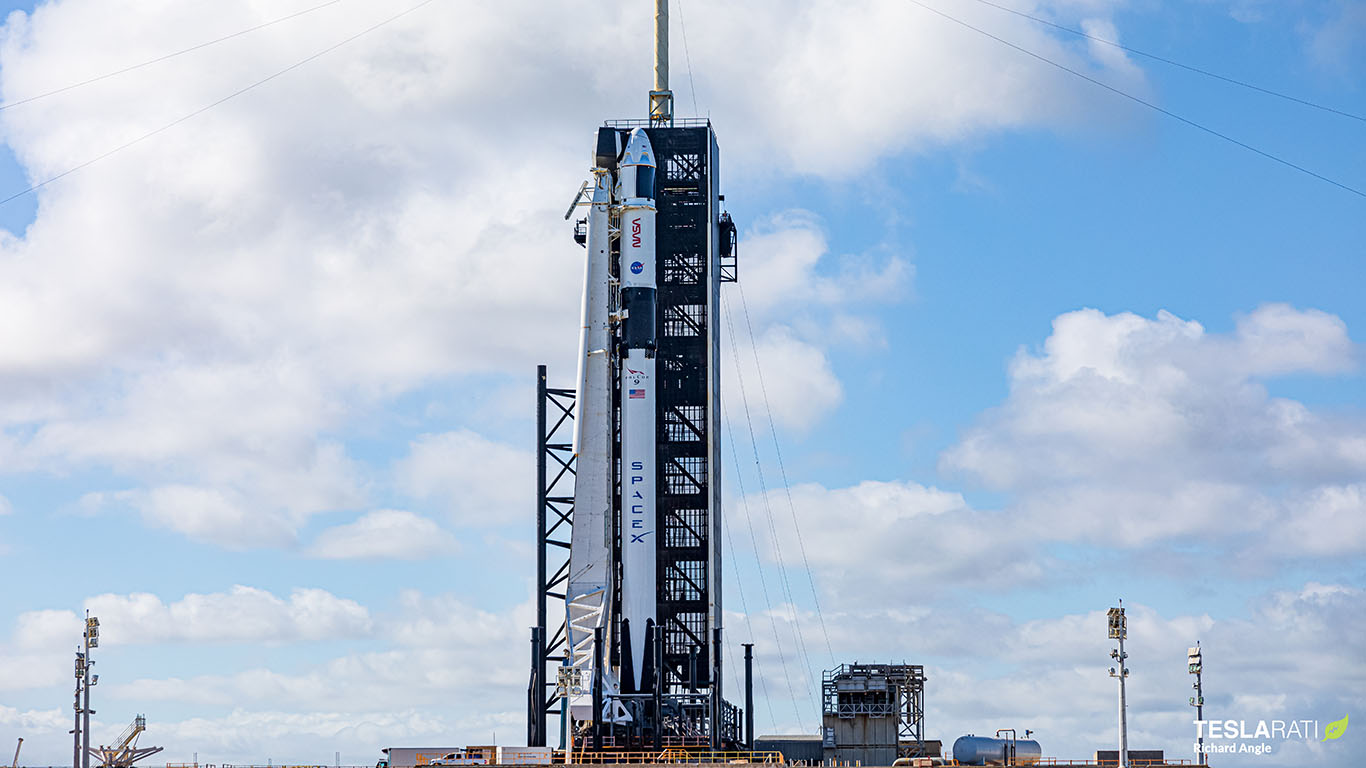

News
SpaceX Crew-1 launch set for Sunday, ULA successfully launches spy satellite
On Friday evening, Nov. 13, NASA and SpaceX announced that the first operational Commercial Crew Program mission of the Crew Dragon would be delayed 24 hours to Sunday, Nov. 15, at 7:27 pm EST (0027 GMT 11/16). During a Crew-1 pre-launch news conference, SpaceX’s senior director of the Human Spaceflight Programs, Benji Reed, stated that the delay was driven by impacts on recovery efforts caused by tropical storm Eta, which had plagued Florida for days.
Just prior to the news conference, United Launch Alliance(ULA) successfully launched its Atlas V rocket after suffering delays of its own earlier in the week. The NROL-101 mission carried a classified payload for the National Reconnaissance Office of the U.S. government and successfully launched from Space Launch Complex 41 (SLC-41) at Cape Canaveral Air Force Station at 5:32 pm EST.
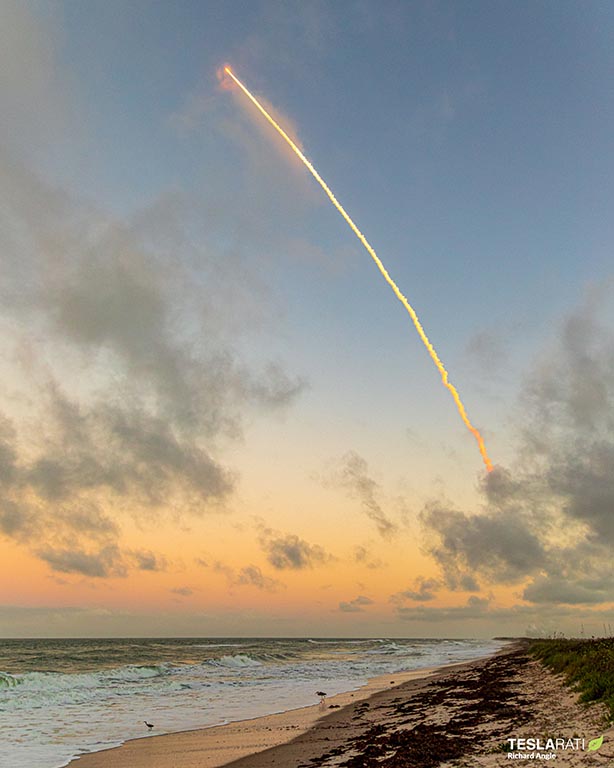
Florida weather caused multiple launch delays
Weather, especially that caused by tropical storm Eta, has caused a domino effect of delays for SpaceX and ULA over the last few weeks. The ULA Atlas V 531 rocket stacked with the secretive NROL-101 payload, initially set to liftoff on Nov. 3, was first delayed by damage sustained to environmental control system hardware of the upper stage.
According to company CEO, Tory Bruno, as the rocket was transported from ULA’s vertical integration facility (VIF) to the launchpad of SLC-41, very high winds caused damage to a duct that controlled the flow rate of an upper payload environmental control system. As a result, the rocket was returned to the VIF to have the duct replaced. A launch attempt scheduled for the following day on Wednesday, Nov. 4, was called off due to an unrelated problem with ground support equipment.
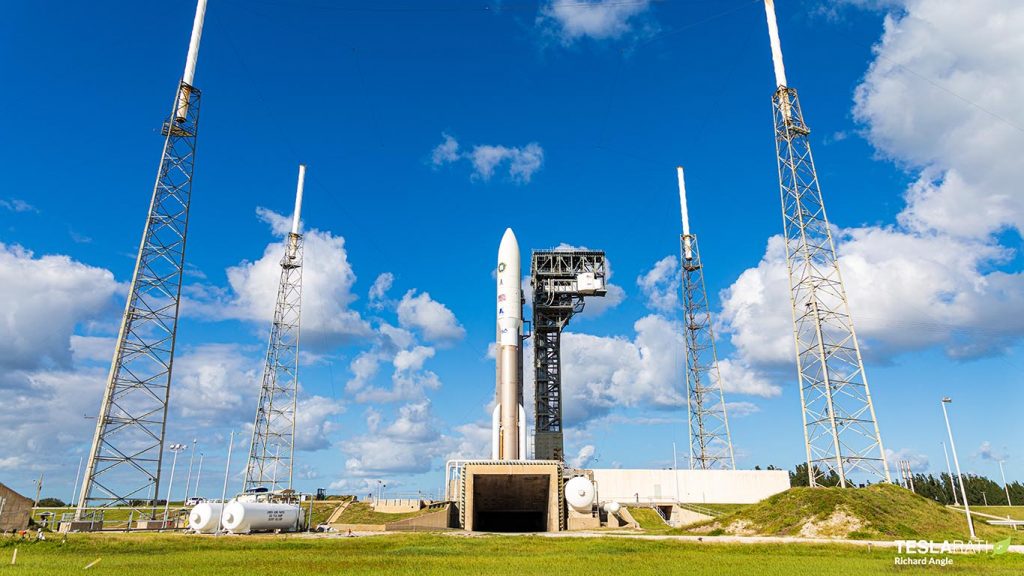
The NROL-101 mission was then set to launch on Sunday, Nov. 8, but that attempt was eventually called off due to the impending weather that would be brought across the Florida peninsula by then hurricane Eta. On Friday, Nov. 6, the Atlas V 531 rocket and payload for the National Reconnaissance Office was once again returned to the VIF for protection from the storm.
A final launch attempt was identified for Friday, Nov. 13, just 22 hours before the scheduled launch of the SpaceX, NASA Crew-1 mission from nearby Launch Complex 39A at the Kennedy Space Center. Fortunately, the weather held out long enough for the ULA Atlas V 531 rocket to liftoff. Following liftoff and successful payload deployment the mission was later declared a full success by ULA.
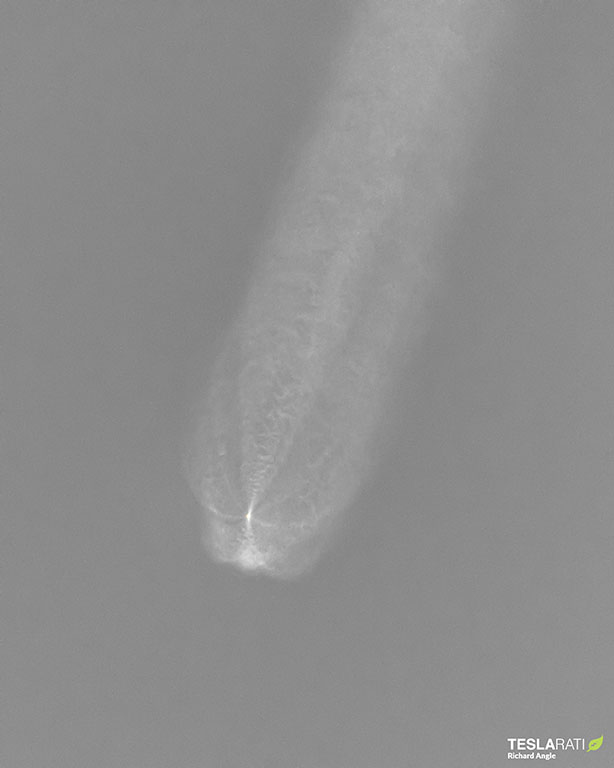
Florida weather also caused offshore recovery delays, impacting crewed launch
Similarly, the SpaceX and NASA Crew-1 mission has also suffered setbacks due to inclement weather, although not at the launch site. Following the successful launch and landing of the B1062 Falcon 9 of the recent GPSII-SV04 mission on Thursday, Nov. 5, SpaceX recovery teams battled unsettled seas to return the booster and the recovery droneship, Of Course I Still Love You (OCISLY), safely back to Port Canaveral.
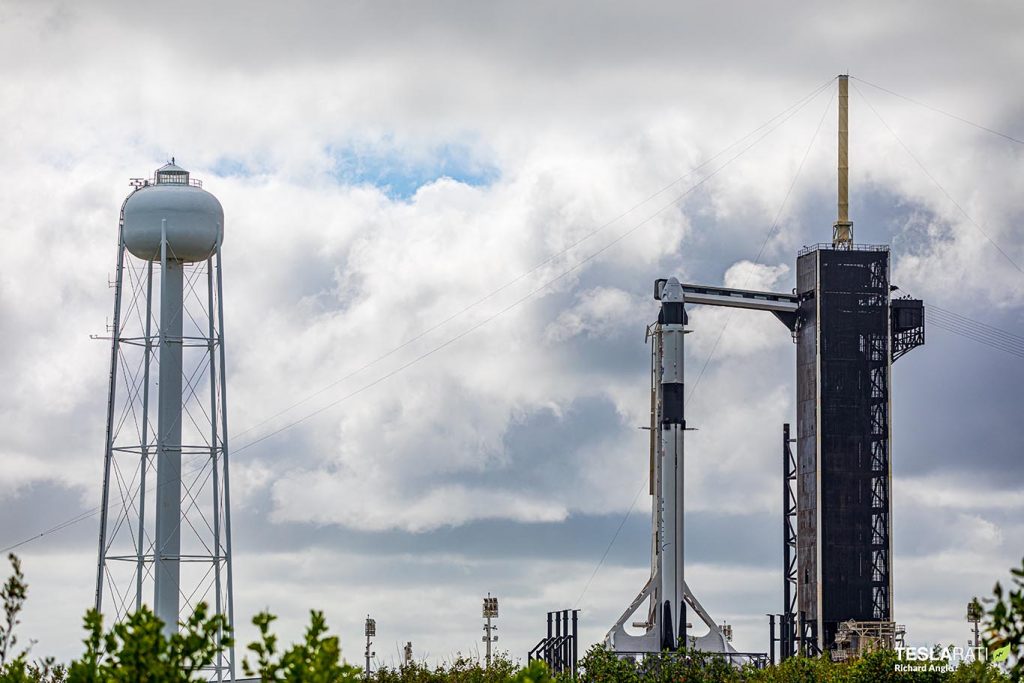
After securing B1062 safely aboard OCISLY, the SpaceX recovery vessel GO Quest took refuge at the Port of Morehead City in North Carolina. The recovery crew would wait there to assist with the recovery of the B1061 Falcon 9 of the Crew-1 mission, rather than return to Port Canaveral in Florida. The droneship Just Read The Instructions (JRTI) was intended to meet the crew of GO Quest at the Crew-1 booster recovery zone prior to the end of the week.
Due to high winds and rough seas churned up by tropical storm Eta, the OCISLY droneship took an exceptionally tedious 7-day journey hugging the eastern coast of the United States to return to Port Canaveral. The delay caused the crew transfer process from OCISLY to JRTI to be delayed which in turn hindered the departure of the JRTI droneship.
As tropical storm Eta moved out and away from Florida the waters of the Atlantic remained too rough for the JRTI droneship to make up for the lost time. Following the conclusion of SpaceX’s Crew-1 preflight launch readiness review on Friday, Nov. 13, it was announced that the delay in getting the recovery droneship to the B1061 landing zone would delay the Crew-1 launch attempt by 24 hours.
Recovering the Falcon 9 booster, of any mission, is a secondary mission objective. However, the recovery of the Crew-1, B1061 Falcon 9 is important to both NASA and SpaceX – enough so to delay a launch attempt. NASA and SpaceX have already designated this booster to be reused on the next Crew Dragon mission, Crew-2, targeted for no earlier than March 30, 2021. In order to reuse a booster to save on launch costs, it must first be successfully recovered.
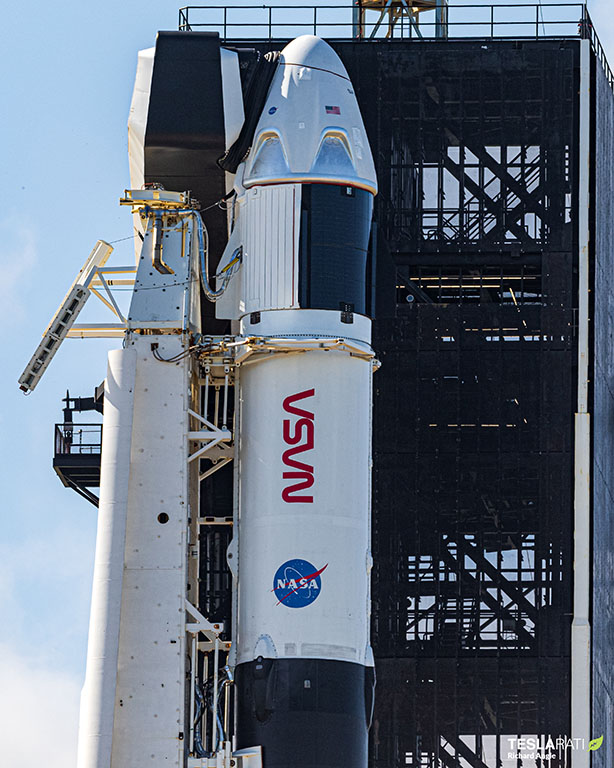
If all goes to plan, three NASA astronauts and one astronaut from the Japan Aerospace Exploration Agency will climb aboard the Crew Dragon Resilience on Sunday, Nov. 15, and blast off to the International Space Station precisely at 7:27 pm EST (0027 11/16) from LC-39A at the Kennedy Space Center.
NASA and SpaceX will provide a hosted live broadcast of all Crew-1 events beginning at 3:15 pm EST on Sunday, Nov. 15, on NASA TV and on the SpaceX website.
Check out Teslarati’s newsletters for prompt updates, on-the-ground perspectives, and unique glimpses of SpaceX’s rocket launch and recovery processes.
News
Tesla UK sales see 14% year-over-year rebound in June: SMMT data
The SMMT stated that Tesla sales grew 14% year-over-year to 7,719 units in June 2025.

Tesla’s sales in the United Kingdom rose in June, climbing 14% year-over-year to 7,719 units, as per data from the Society of Motor Manufacturers and Traders (SMMT). The spike in the company’s sales coincided with the first deliveries of the updated Model Y last month.
Model Y deliveries support Tesla’s UK recovery
Tesla’s June performance marked one of its strongest months in the UK so far this year, with new Model Y deliveries contributing significantly to the company’s momentum.
While the SMMT listed Tesla with 7,719 deliveries in June, independent data from New AutoMotive suggested that the electric vehicle maker registered 7,891 units during the month instead. However, year-to-date figures for Tesla remain 2% down compared to 2024, as per a report from Reuters.
While Tesla made a strong showing in June, rivals are also growing. Chinese automaker BYD saw UK sales rise nearly fourfold to 2,498 units, while Ford posted the highest EV growth among major automakers, with a more than fourfold increase in the first half of 2025.
Overall, the UK’s battery electric vehicle (BEV) demand surged 39% to to 47,354 units last month, helping push total new car sales in the UK to 191,316 units, up 6.7% from the same period in 2024.
EV adoption accelerates, but concerns linger
June marked the best month for UK car sales since 2019, though the SMMT cautioned that growth in the electric vehicle sector remains heavily dependent on discounting and support programs. Still, one in four new vehicle buyers in June chose a battery electric vehicle.
SMMT Chief Executive Mike Hawes noted that despite strong BEV demand, sales levels are still below regulatory targets. “Further growth in sales, and the sector will rely on increased and improved charging facilities to boost mainstream electric vehicle adoption,” Hawes stated.
Also taking effect this week was a new US-UK trade deal, which lowers tariffs on UK car exports to the United States from 27.5% to 10%. The agreement could benefit UK-based EV producers aiming to expand across the country.
News
Tesla Model 3 ranks as the safest new car in Europe for 2025, per Euro NCAP tests
Despite being on the market longer than many of its rivals, the Tesla Model 3 continues to set the bar for vehicle safety.

The Tesla Model 3 has been named the safest new car on sale in 2025, according to the latest results from the Euro NCAP. Among 20 newly tested vehicles, the Model 3 emerged at the top of the list, scoring an impressive 359 out of 400 possible points across all major safety categories.
Tesla Model 3’s safety systems
Despite being on the market longer than many of its rivals, the Tesla Model 3 continues to set the bar for vehicle safety. Under Euro NCAP’s stricter 2025 testing protocols, the electric sedan earned 90% for adult occupant protection, 93% for child occupant protection, 89% for pedestrian protection, and 87% for its Safety Assist systems.
The updated Model 3 received particular praise for its advanced driver assistance features, including Tesla’s autonomous emergency braking (AEB) system, which performed well across various test scenarios. Its Intelligent Speed Assistance and child presence detection system were cited as noteworthy features as well, as per a WhatCar report.
Other notable safety features include the Model 3’s pedestrian-friendly pop-up hood and robust crash protection for both front and side collisions. Euro NCAP also highlighted the Model 3’s ability to detect vulnerable road users during complex maneuvers, such as turning across oncoming traffic.
Euro NCAP’s Autopilot caution
While the Model 3’s safety scores were impressive across the board, Euro NCAP did raise concerns about driver expectations of Tesla’s Autopilot system. The organization warned that some owners may overestimate the system’s capabilities, potentially leading to misuse or inattention behind the wheel. Even so, the Model 3 remained the highest-scoring vehicle tested under Euro NCAP’s updated criteria this year.
The Euro NCAP’s concerns are also quite interesting because Tesla’s Full Self-Driving (FSD) Supervised, which is arguably the company’s most robust safety suite, is not allowed for public rollout in Europe yet. FSD Supervised would allow the Model 3 to navigate inner city streets with only minimal human supervision.
Other top scorers included the Volkswagen ID.7, Polestar 3, and Geely EX5, but none matched the Model 3’s total score or consistency across categories. A total of 14 out of 20 newly tested cars earned five stars, while several models, including the Kia EV3, MG ZS, and Renault 5, fell short of the top rating.
Elon Musk
Why Tesla’s Q3 could be one of its biggest quarters in history
Tesla could stand to benefit from the removal of the $7,500 EV tax credit at the end of Q3.

Tesla has gotten off to a slow start in 2025, as the first half of the year has not been one to remember from a delivery perspective.
However, Q3 could end up being one of the best the company has had in history, with the United States potentially being a major contributor to what might reverse a slow start to the year.
Earlier today, the United States’ House of Representatives officially passed President Trump’s “Big Beautiful Bill,” after it made its way through the Senate earlier this week. The bill will head to President Trump, as he looks to sign it before his July 4 deadline.
The Bill will effectively bring closure to the $7,500 EV tax credit, which will end on September 30, 2025. This means, over the next three months in the United States, those who are looking to buy an EV will have their last chance to take advantage of the credit. EVs will then be, for most people, $7,500 more expensive, in essence.
The tax credit is available to any single filer who makes under $150,000 per year, $225,000 a year to a head of household, and $300,000 to couples filing jointly.
Ending the tax credit was expected with the Trump administration, as his policies have leaned significantly toward reliance on fossil fuels, ending what he calls an “EV mandate.” He has used this phrase several times in disagreements with Tesla CEO Elon Musk.
Nevertheless, those who have been on the fence about buying a Tesla, or any EV, for that matter, will have some decisions to make in the next three months. While all companies will stand to benefit from this time crunch, Tesla could be the true winner because of its sheer volume.
If things are done correctly, meaning if Tesla can also offer incentives like 0% APR, special pricing on leasing or financing, or other advantages (like free Red, White, and Blue for a short period of time in celebration of Independence Day), it could see some real volume in sales this quarter.
You can now buy a Tesla in Red, White, and Blue for free until July 14 https://t.co/iAwhaRFOH0
— TESLARATI (@Teslarati) July 3, 2025
Tesla is just a shade under 721,000 deliveries for the year, so it’s on pace for roughly 1.4 million for 2025. This would be a decrease from the 1.8 million cars it delivered in each of the last two years. Traditionally, the second half of the year has produced Tesla’s strongest quarters. Its top three quarters in terms of deliveries are Q4 2024 with 495,570 vehicles, Q4 2023 with 484,507 vehicles, and Q3 2024 with 462,890 vehicles.
-

 Elon Musk5 days ago
Elon Musk5 days agoTesla investors will be shocked by Jim Cramer’s latest assessment
-

 News1 week ago
News1 week agoTesla Robotaxi’s biggest challenge seems to be this one thing
-

 Elon Musk2 weeks ago
Elon Musk2 weeks agoFirst Look at Tesla’s Robotaxi App: features, design, and more
-

 News2 weeks ago
News2 weeks agoWatch Tesla’s first driverless public Robotaxi rides in Texas
-

 News2 weeks ago
News2 weeks agoSpaceX and Elon Musk share insights on Starship Ship 36’s RUD
-

 News1 week ago
News1 week agoWatch the first true Tesla Robotaxi intervention by safety monitor
-

 News2 weeks ago
News2 weeks agoTesla has started rolling out initial round of Robotaxi invites
-

 Elon Musk2 weeks ago
Elon Musk2 weeks agoTesla to launch in India in July with vehicles already arriving: report


















